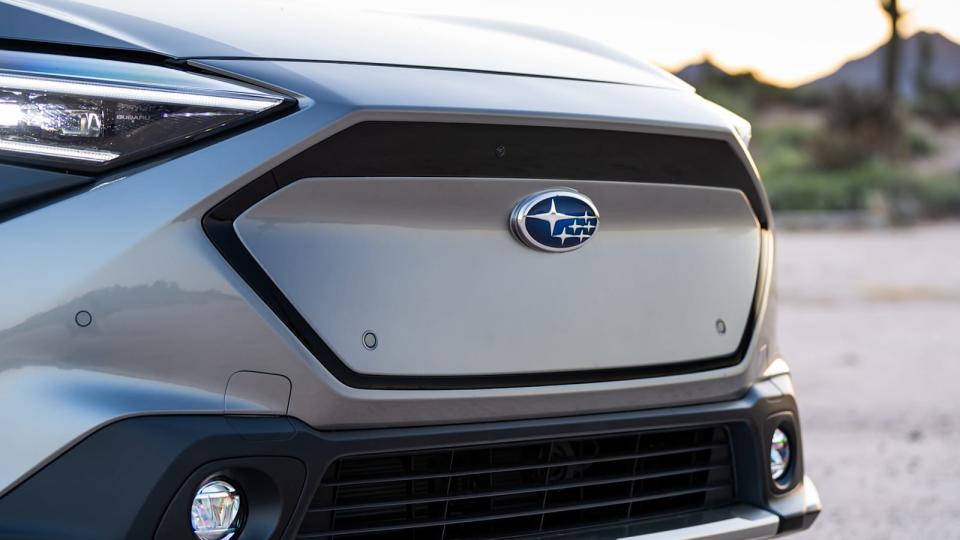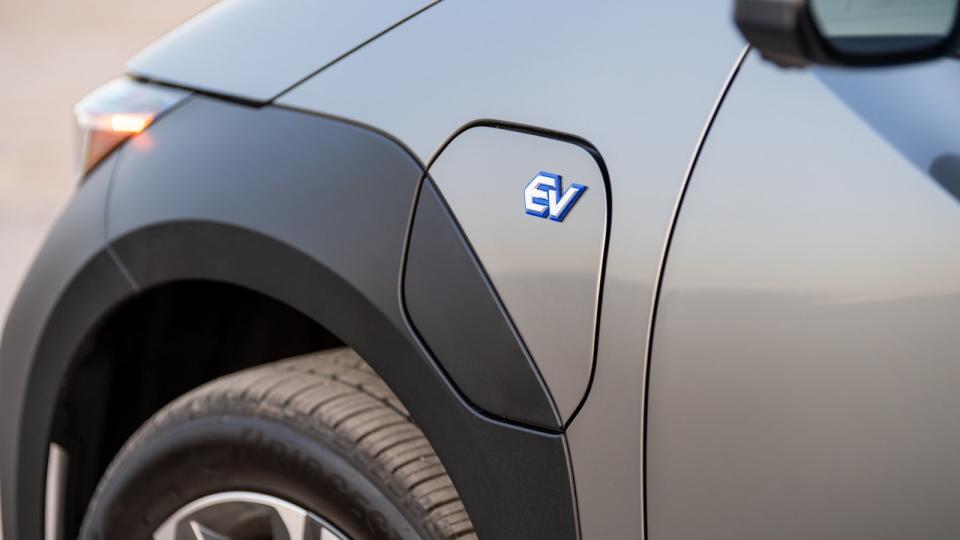2023 Subaru Solterra First Drive Review | True Subaru, electrified

PARADISE VALLEY, Ariz. — Subaru owners are a loyal bunch, but as more drivers decide to go greener by driving an electric vehicle, those loyalists have been left behind. The closest thing has been the Crosstrek Hybrid, a plug-in hybrid with a meager 17 miles of electric range. Now, though, there’s the new 2023 Subaru Solterra, the brand’s first all-electric vehicle. However, it was developed in partnership with Toyota and without a Subaru-trademark boxer engine, is it really Subaru enough to keep those loyalists loyal?
The company has told you time and time again that love is “what makes a Subaru a Subaru.” We’d argue there’s more to the recipe than just that (and a boxer engine), as we’ve come to expect certain things from vehicles bearing the stars of Pleiades on their nose. They also need to support an active lifestyle, whether that’s an enthusiast hitting the track in a WRX, or the whole family hitting the trail in the new Outback Wilderness. Of course, in all but the BRZ, we expect standard all-wheel drive to help get to a campsite or make it to work on a snowy day. Subaru even makes sure its crossovers’ roof rails are more capable than most for supporting roof-mounted tents. Also, it’s gotta be good for dogs. Subaru loves dogs.
The Solterra, which appropriately combines the Latin words for sun and Earth, promises all this and more. Besides the missing boxer engine, there’s no continuously variable transmission sending power onto all four wheels. Instead, the Solterra is motivated by a pair of 80-kilowatt electric motors providing the familiar all-wheel drive that helps define Subaru as a brand. Those e-motors are good for a total of 218 horsepower and 249 pound-feet of torque, and its 0-60 time of 6.5 seconds feels like a suitable answer to those who lament the absence of a turbocharged flat-four in something like the Forester.




Its 72.8-kilowatt-hour battery provides over 220 miles of driving between charging sessions (228 for the base Premium trim, and 222 for Touring and Limited), which, while not anything close to segment-leading, is plenty for the vast majority of use cases. With a 355-volt battery architecture, the Solterra can take advantage of a 100-kW DC fast charger, recovering 80% of a charge in about 56 minutes. Again, that’s acceptable, but greatly outdone by the 800-volt architecture of the faster-charging Hyundai Ioniq 5 and Kia EV6 that can take advantage of 150- and 350-kW fast chargers. A recharge of the Solterra takes nine hours using a 240-volt Level 2 charger (what you can have installed at home), meaning you can start each day with a full battery.
Are you worried the Solterra won’t be quite as capable as your trusty Outback? Fear not, for the Solterra boasts 8.3 inches of clearance, just a fraction of an inch shy of the excellent 8.7 inches found in Subaru’s other crossovers (minus the new Wilderness models that boast even more). With its relatively short front and rear overhangs, the Solterra has an approach angle of 17.7 degrees, a departure angle of 25.4 degrees and an 18.2-degree breakover angle — not in the realm of purpose-built off-roaders, but enough to allow you to explore many of those forestry roads with confidence. Furthermore, the Solterra has a wading depth of 19.7 inches, which is just a few tenths of an inch shy of the Jeep Cherokee’s safe fording capability.
The ability to clear rocks and ruts is all well and good, but what about the rest of the whole soft- and off-road experience? The Solterra features an electrified version of Subaru’s dual-function X-Mode drive system with a setting for Snow/Dirt and for Deep Snow/Mud. There’s also the Grip Control feature, which is essentially a crawl mode for maintaining an adjustable low speed, especially during steep hill ascent and descent. This all works as well as you’d hope it would, allowing us to traverse loose gravel roads with speed and grace, while the stability control works nearly imperceptibly to keep the Solterra’s nose pointed where we wanted it (the only clue the car was doing behind-the-scenes work was the stability control icon lighting up on the display). It was happy to crawl over rocks and furrows, and up and down steep dirt hills. The Subaru felt right at home on Tonto National Forest trails we wouldn’t dare tackle in a Hyundai Ioniq 5, Kia EV6, VW ID.4 or Ford Mustang Mach-E.



For on-road driving, the Solterra has Normal, Eco and Sport modes to allow you to trade speed for efficiency, or vice versa. The differences between these modes aren’t as dramatic as they can be in other vehicles, but you definitely notice a difference when you put the Solterra into Sport and step on the accelerator. Either way, it pulls smoothly and quickly to highway speeds. There are also four levels of regenerative braking, selectable via paddles mounted on the back of the steering wheel. For the most regen force, there’s a button to turn on S-Pedal mode. Sorry one-pedal drivers, you’ll still have to use the brake pedal to bring the Solterra to a complete stop, no matter what you do.

 Yahoo Autos
Yahoo Autos 
